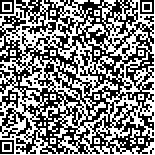下载中心
优秀审稿专家
优秀论文
相关链接
摘要

如何快速、准确与客观地提取城镇用地信息,以获得城镇用地的分布范围和面积资料,是有关城镇问题研究中经常涉及到的一个基本问题,现代遥感技术为这个问题的有效解决提供了强有力的保证,运用提出的归一化建筑指数,从TM图像进行了无锡市城镇用地信息的自动提取,研究结果表明,与传统的计算机分类和手工屏幕数字化方法相比,归一化建筑指数法是一种非常行之有效的方法。
Land covers in urban areas tend to change drastically over a short period of time due to rapid urbanization. Especially, land covers in China are changing more frequently, which have been occurred in urban and peri-urban areas where accompanied rapid economic development. Remote sensing images are ideally used to monitor current land cover changes thanks to their rapid up-date capability. There are two conventional methods in producing land covers from either aerial photographs or satellite images: manual interpretation and computer classification. The conventional methods of converting images into urban land covers have a number of limitations. The first method is tedious and highly subject to the interpretation of the image analyst, and fails to take advantage of all spectral information contained in multi-spectral remote sensing images because only limited number of spectral bands can be used to generate the false color composite. The second method, even though requires much less human intervention, is still subject to many limitations. It is difficult task to achieve a high accuracy level, and the conventional supervised classification method requires the selection of a number of training samples for all those covers whose representativeness directly affects the classification accuracy. In this study we present a new method based on Normalized Difference Built-up Index(NDBI): NDBI=(TM5-TM4)/(TM5+TM4) This method has been successfully applied to automatically extract the urban land in Wuxi City, Eastern China by manipulating the spectral bands of TM imagery. The results indicate that it can serve as a worthwhile alternative for quickly extracting urban land. This proposed new method has a number of advantages over the conventional supervised classification method. It is very objective because it requires minimun interference from the image analyst, much faster and may acquire a high accuracy. However, the universality of this proposed method needs to be tested further in other geographic areas as the spectral response of the various land covers may vary spatially.

